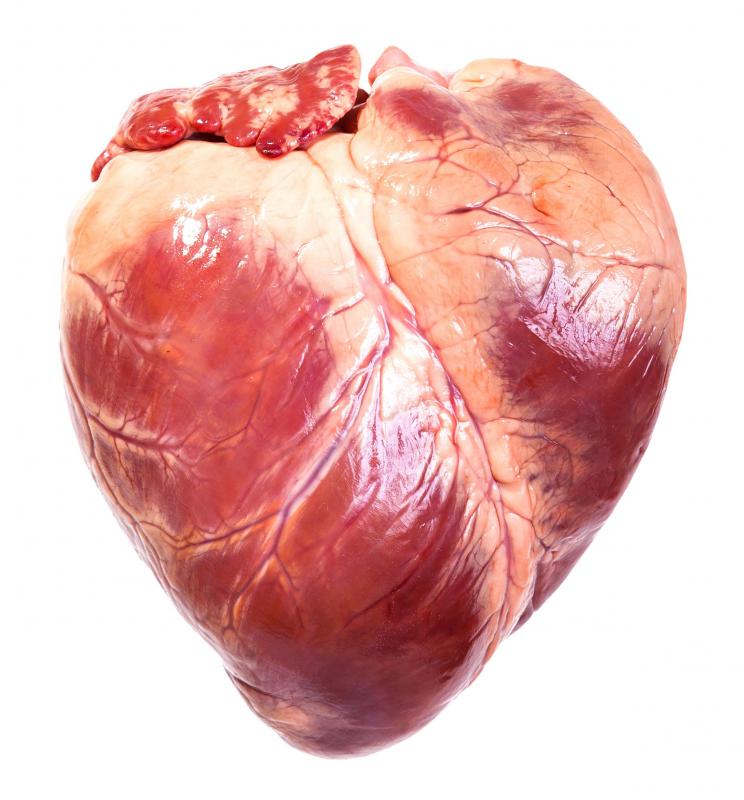At TheHealthBoard, we're committed to delivering accurate, trustworthy information. Our expert-authored content is rigorously fact-checked and sourced from credible authorities. Discover how we uphold the highest standards in providing you with reliable knowledge.
What Is Isovolumetric Contraction?
Isovolumetric contraction is a normal cardiac event that occurs in the early stage of heart contraction, known as systole, when the ventricles begin to contract, but produce no change in volume. The word isovolumetric literally means “the volume stays the same.” Between the closing of the atrioventricular valves and the opening of the semilunar valves is when isovolumetric contraction occurs, so that both valves are closed, thereby temporarily trapping blood in the ventricles as ventricular contraction, or systole, begins.
In healthy people, the process by which blood moves into and through the heart is divided into three stages. The first stage is mid-to-late diastole, meaning dilation, when the heart's ventricles fill with blood. The second stage is ventricular systole when the atria relax and the ventricles contract forcing blood into the body and lungs. Isovolumetric contraction occurs in the early part of this second stage. The third stage is early diastole when the atria contract and the ventricles relax, which is called isovolumetric relaxation.

There are four chambers in the human heart: the right and left ventricles located at the bottom of the heart, and the right and left atria, which are located at the top of the heart. The right atrium receives deoxygenated blood from two veins called the superior and inferior vena cavae. The superior vena cava drains blood from the upper body, and the inferior vena cava drains blood from the lower body.

Blood leaves the right atrium via the right atrioventricular valve and enters the right ventricle, which only pumps blood to the lungs. When the right ventricle contracts, the right atrioventricular valve closes, preventing blood from flowing back into the atrium. Pressure in the ventricle builds, forcing the right semilunar valve to open, which pushes blood out of the ventricle into the pulmonary artery, and then into the lungs. The pulmonary artery has a major branch called the coronary artery, which only supplies blood to the heart. The point when the right atrioventricluar valve closes and before the right semilunar valve opens is called isovolumetric contraction.

Oxygenated blood from the lungs is sent back to the heart via the pulmonary vein. Blood enters the left atrium via the pulmonary vein, passes through the left atrioventricular valve, and flows into the left ventricle. When the left ventricle contracts, the atrioventricular valve closes and the left semilunar valve opens. Blood leaves the left ventricle via the left semilunar valve and flows into the aorta, which is the main artery that supplies the body with blood. The short space of time between the closing of the left atrioventricular valve and the opening of the left semilunar valve is also called isovolumetric contraction.
AS FEATURED ON:
AS FEATURED ON:














Discuss this Article
Post your comments